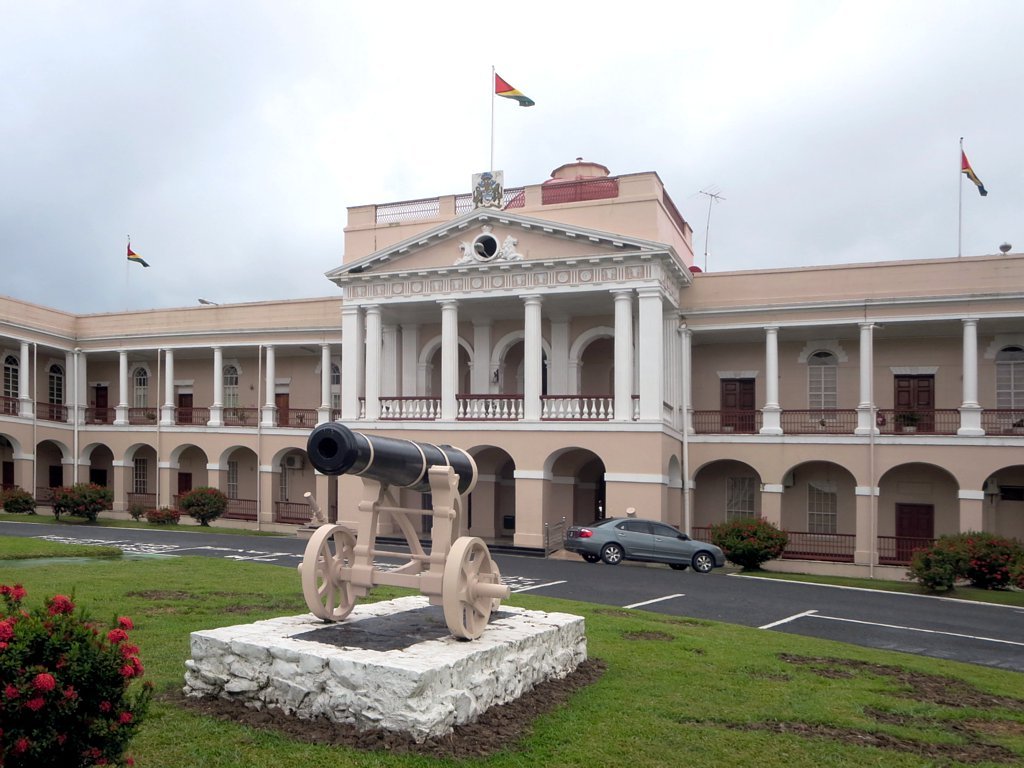Close

The Parliament Building in Georgetown, Guyana, where lawmakers approved a G$57.5B supplemental budget for development
GEORGETOWN – Guyana’s National Assembly has approved a G$57.5 billion (US$275 million) supplementary budget to accelerate infrastructure projects and social programs across the country. Tabled by Senior Finance Minister Dr. Ashni Singh, the Supplementary Appropriation Bill No. 1 of 2025 won passage after extensive debate on May 24, paving the way for critical investments in housing, electricity, roads, and cash grants to citizens.
Under the plan, G$29.5 billion is earmarked to upgrade and expand the electricity distribution network, complementing construction of a 300 MW natural gas power plant that is expected to cut energy costs by 50% upon completion. An additional G$7.8 billion will modernize 157 km of existing power lines, improving reliable electricity access for communities nationwide. These upgrades coincide with the government’s push to bring affordable power to new areas – 17 previously unserved villages are slated to receive electricity via solar units and grid extensions.
Meanwhile, G$12 billion is allocated for the government’s aggressive housing drive, continuing infrastructure works in fast-growing housing schemes. Another G$1.5 billion will extend all-weather hinterland roads to better link remote interior regions with coastal markets. The budget also provides G$1.4 billion for farm-to-market access roads, boosting the agriculture sector’s expansion.
Notably, the supplementary funding includes an extra G$3 billion for the administration’s ongoing “Because We Care” cash grant program, which provides a one-off G$100,000 payment to help citizens cope with living costs. As of May 21, over 617,000 Guyanese – roughly 77% of the population – had registered for the grant, with 96% of eligible recipients already receiving checks. Authorities project another 12,000 people will sign up by the end of June. The cash relief, first introduced by the People’s Progressive Party/Civic (PPP/C) government last year, has injected disposable income into communities nationwide.
“Various development initiatives across the country will continue throughout the year,” Minister Singh said in Parliament, hailing the additional funds as vital to “meet the energy demands of our growing economy and unlock the potential of the manufacturing and industrial sector”. The opposition scrutinized the spending in committee but ultimately did not oppose the bill’s passage.
This latest fiscal package comes amid windfall oil revenues and record economic growth. Guyana’s government – led by President Irfaan Ali’s PPP/C – has emphasized using petroleum profits to modernize infrastructure and improve living standards. The supplementary budget’s swift approval signals broad political support for accelerating development projects. With these funds now secured, upgrades to power grids, new roads, expanded housing, and direct cash transfers are expected to advance rapidly in the coming months, delivering tangible benefits ahead of Guyana’s upcoming general elections on September 1.

The Guyana Project is an independent media platform delivering fact-checked, ground-level reporting on politics, economy, and public life in Guyana. With a focus on transparency and development, we bring unfiltered news and thoughtful analysis to help shape a more informed, forward-looking nation.

GEORGETOWN – Parliament okays G$57.5B boost for roads, housing, and power

Lorem Ipsum is simply dummy text of the printing and typesetting industry. Lorem Ipsum has been the industry’s standard dummy text ever since the 1500s, when an unknown printer took a galley of type and scrambled it to make a type specimen book. It has survived not only five centuries, but also the leap into electronic typesetting, remaining essentially unchanged. It was popularised in the 1960s with the release of Letraset sheets containing Lorem Ipsum passages, and more recently with desktop publishing software like Aldus PageMaker including versions of Lorem Ipsum.
t is a long established fact that a reader will be distracted by the readable content of a page when looking at its layout. The point of using Lorem Ipsum is that it has a more-or-less normal distribution of letters, as opposed to using ‘Content here, content here’, making it look like readable English. Many desktop publishing packages and web page editors now use Lorem Ipsum as their default model text, and a search for ‘lorem ipsum’ will uncover many web sites still in their infancy. Various versions have evolved over the years, sometimes by accident, sometimes on purpose (injected humour and the like).
Contrary to popular belief, Lorem Ipsum is not simply random text. It has roots in a piece of classical Latin literature from 45 BC, making it over 2000 years old. Richard McClintock, a Latin professor at Hampden-Sydney College in Virginia, looked up one of the more obscure Latin words, consectetur, from a Lorem Ipsum passage, and going through the cites of the word in classical literature, discovered the undoubtable source. Lorem Ipsum comes from sections 1.10.32 and 1.10.33 of “de Finibus Bonorum et Malorum” (The Extremes of Good and Evil) by Cicero, written in 45 BC. This book is a treatise on the theory of ethics, very popular during the Renaissance. The first line of Lorem Ipsum, “Lorem ipsum dolor sit amet..”, comes from a line in section 1.10.32.